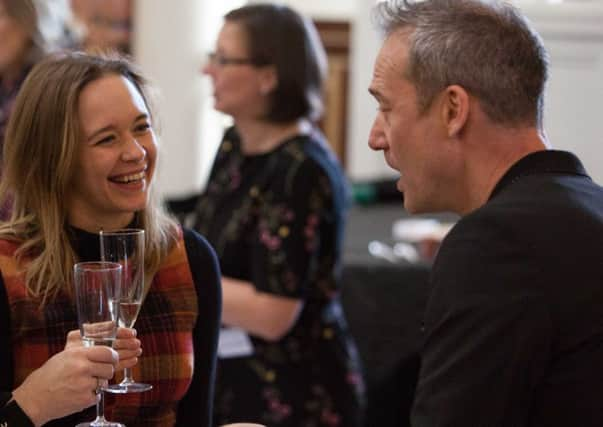Sparkling wine festival to shine light on Italian gem


It’s a delicious sparkling wine made using the traditional bottle-fermented method – the same process used to make champagne – from Brescia, in northern Italy’s Lombardy region. These are small production wines made by boutique producers, some of the most prestigious of which will be at The Hub in Edinburgh next Tuesday to introduce Scottish wine lovers to an Italian classic.
How is it different from Prosecco?
Although both sparkling wines, they are made using different methods producing very different results. Prosecco is made using the quicker and therefore less-expensive tank method, where the second fermentation takes place in a pressurised tank or vat rather than in the bottle, resulting in a lighter style of sparkling wine. But with the traditional bottle-fermented method, which is used in champagne, the second fermentation takes place in the bottle. After this second fermentation, the wine ages on the dead yeast cells or ‘lees’, which form following the fermenting process. The wine is then aged for a minimum of 18 months for a standard Franciacorta to five years for a Franciacorta Riserva. This ageing process gives the wine its more complex, yeasty and utterly delicious character. It’s all quite labour intensive and a lengthy, more expensive process, but well worth it.
Advertisement
Hide AdAdvertisement
Hide AdIf you had Prosecco in one glass and Franciacorta in another, what would be the most obvious differences?
The Franciacorta will have a lot more flavour, it is finer with more elegant bubbles and complex in character.
Is Franciacorta Italy’s answer to champagne then?
There are many similar characteristics, being produced using the same method and the same grape varieties, chardonnay and pinot noir. However, they each have their own characteristics. In the north of Italy, where Franciacorta is produced, it’s warmer, so often the grapes are picked when they are riper, thus producing a wine with perhaps richer characteristics.
Is it a ‘foodie’ wine?
It’s everything – it’s perfect as an aperitif, but it works really well with food too, particularly shellfish and white meats.
Why haven’t we heard of it before?
Franciacorta actually dates back to the 16th century, Napoleonic records show that apparently 1,000 vineyards were in existence in 1809. In the 1960s, when it began its comeback, there were 11 producers with 29 hectares of vineyards making 217,000 bottles. Franciacorta received DOC status in 1967 and DOCG status – Italy’s highest wine classification – in 1995. Now there are 116 wineries, which produce 17.5 million bottles a year.
Any tips for festival visitors?
Talk to the producers – they are so knowledgeable and passionate about what they do, they will be able to guide you. It’s a rare opportunity and a real treat to be able to compare and contrast sparkling wines, so this is a great chance to explore the flavours and styles around.
Pace yourself. There will be 15 producers at the Franciacorta Sparkling Wine Festival, giving visitors the chance to try around 100 different wines. To get the most out of the experience, make like an expert and, especially during the early part of the evening, spit the wine out after you have tasted. It allows you to try more wines, find what you like, then go back and enjoy your favourites.
Advertisement
Hide AdAdvertisement
Hide AdThere is a masterclass at the start of the event, which will be hosted by Franciacorta UK Ambassador Tom Harrow and Scottish wine writer Peter Ranscombe. They will explain about Franciacorta, the region, the wines and the styles, and offer a tutored tasting, which is a great way of being able to find out a little more about the wines before trying them in the main tasting hall.
Wine styles generally depend on sweetness, so try comparing a Brut and an Extra Dry (lots of people think Extra Dry must be drier than Brut, but it isn’t). One particularly interesting style is the Satèn, made from 100 per cent chardonnay grapes. Due to the production process, there is less pressure in the bottle and it’s aged for longer on its lees, resulting in a gentler, creamier style, with much softer bubbles – a perfect example of a Franciacorta you will want to fill your glass with.
Franciacorta Sparkling Wine Festival, 18 June, 6:30pm-9pm, The Hub, Edinburgh. Tickets cost £18; Masterclass, £5; group of six tickets, £15 each from Wine Events Scotland (www.wineeventsscotland.co.uk)